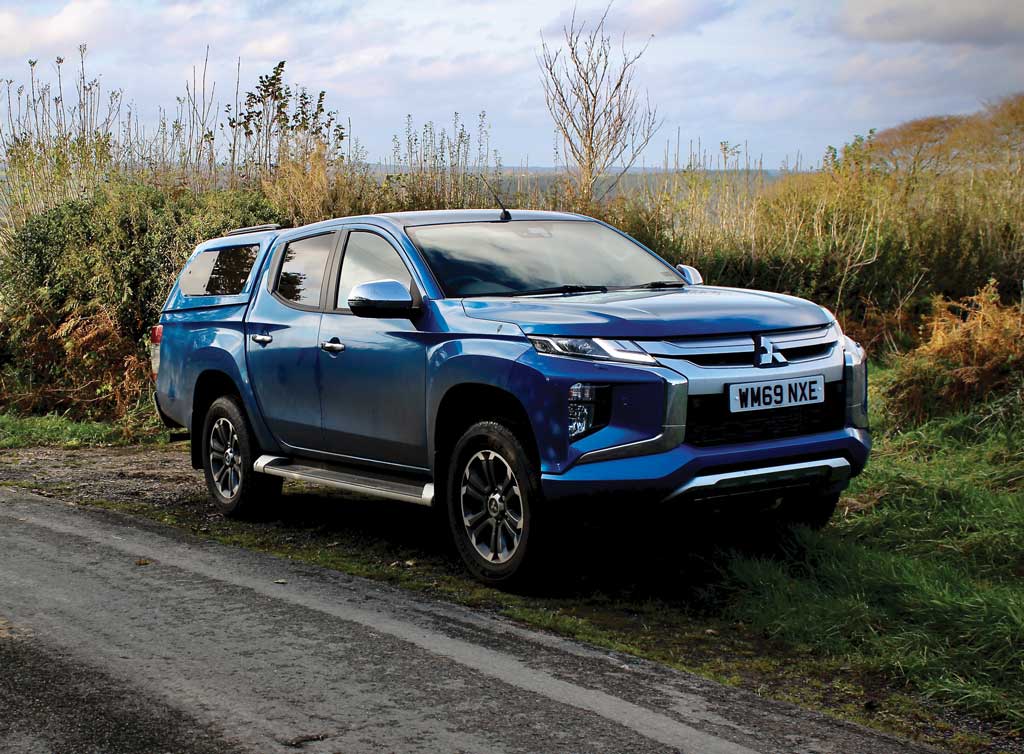
It’s the season of mist and mellow slipperiness, when the combination of wet leaves and mud dragged onto the roads by tractors emerging from fields turns the local lanes into something resembling narrow ribbons of grease. Not the ideal conditions for a rear-wheel drive pick-up weighing two tonnes which, for the most part, is running with an empty load area. It means that the L200 is spending more time in four-wheel drive mode, which can be activated at speeds of up to 62mph. Without it, the L200 is quick to break traction, especially when trying to steer and pull away at the same time. It’s all perfectly controllable, but four-wheel drive provides a little extra security in exchange for reduced fuel economy. It’s something we’ll miss when the L200 goes back to Mitsubishi HQ and we put the D-Max back on the road. The Isuzu cannot be driven on the road in four-wheel drive mode, so the L200 has a distinct advantage. Switching from rear-wheel drive to four-wheel drive can be done on the fly using the rotary dial selector between the front seats. There are two additional modes: four-wheel drive with a locked differential, and four-wheel drive low-ratio with a locked differential. In the case of the latter, a new ‘Off-Road’ mode offers settings for gravel, mud/snow, sand and rock. We will be putting this to the test by engaging in some green-laning next month. There’s little point running a car like the L200 without getting the wheels properly dirty.
Have you seen the recent television advert promoting Volvo’s rear cross traffic alert system? It’s a good example of a system motoring writers take for granted, but is actually highly appealing for the buying public. It’s fitted to the Barbarian X version of the Mitsubishi L200, and it uses a radar inside the rear bumper to detect vehicles approaching from the rear quarter or crossing behind the car. Because I’m exposed to such systems on a regular basis, I’ve become too blasé about its effectiveness and how useful it is. However, my wife returned from a recent shopping trip and was quick to extol the virtues of what she called “a really cool feature”. Rearward visibility in the L200 isn’t great – especially with a rear box fitted – so this small feature makes a big difference. It makes it easier to live with the L200 on a daily basis.
Which brings me to the conclusion of this month’s update. Because we’ve lived with a pick-up for so long, we don’t think twice about driving the L200 in towns, cities, narrow streets and car parks. So I should mention that this is an incredibly easy car to drive. Excellent front visibility, light steering and a very car-like cabin are the highlights. My only real complaint is that the 2.3-litre turbodiesel engine has to work hard on the hills of Devon – and the soundtrack can be a little intrusive. Joining the A30 via a steep slip road requires the use of earplugs. Pardon?
Date arrived 10th March 2020
Mileage 6,007
Economy (WLTP combined) 29.1mpg
Economy (On test) 28.4mpg
© Motorworld Media 2023
Registered Office: 4 Capricorn Centre, Cranes Farm Road, Basildon, Essex. SS14 3JJ
Company Number: 8818356
Website designed by Steve Dawson